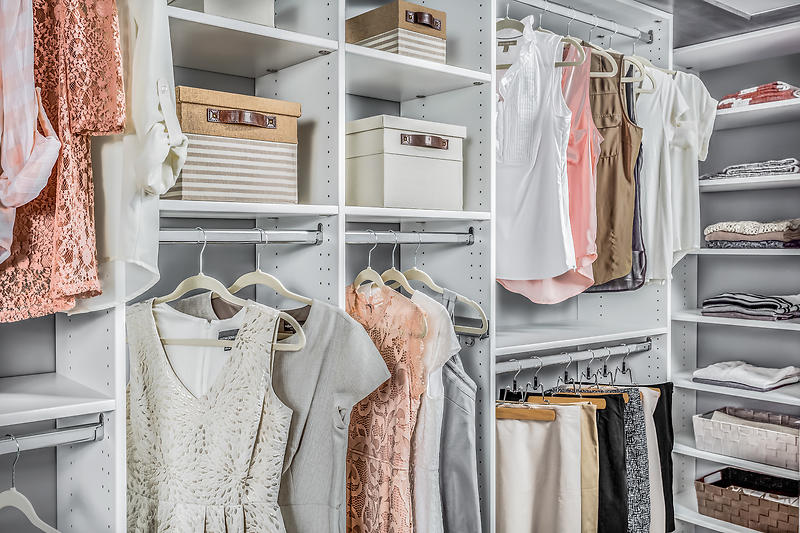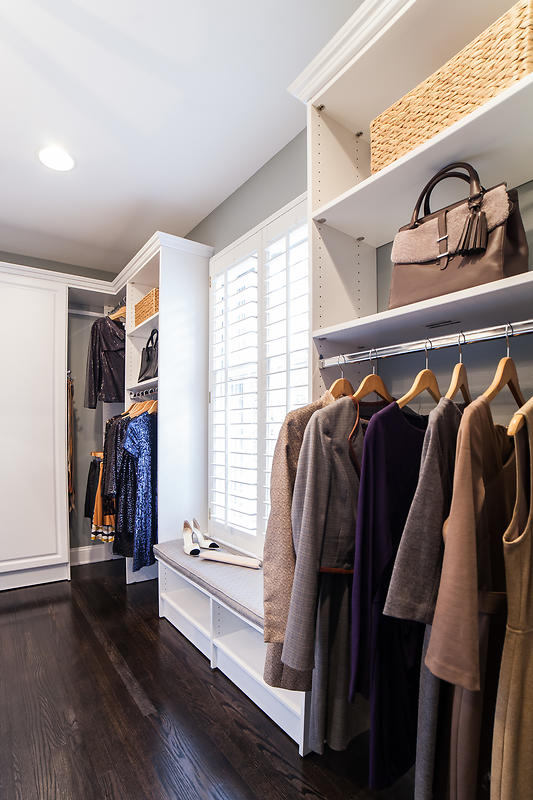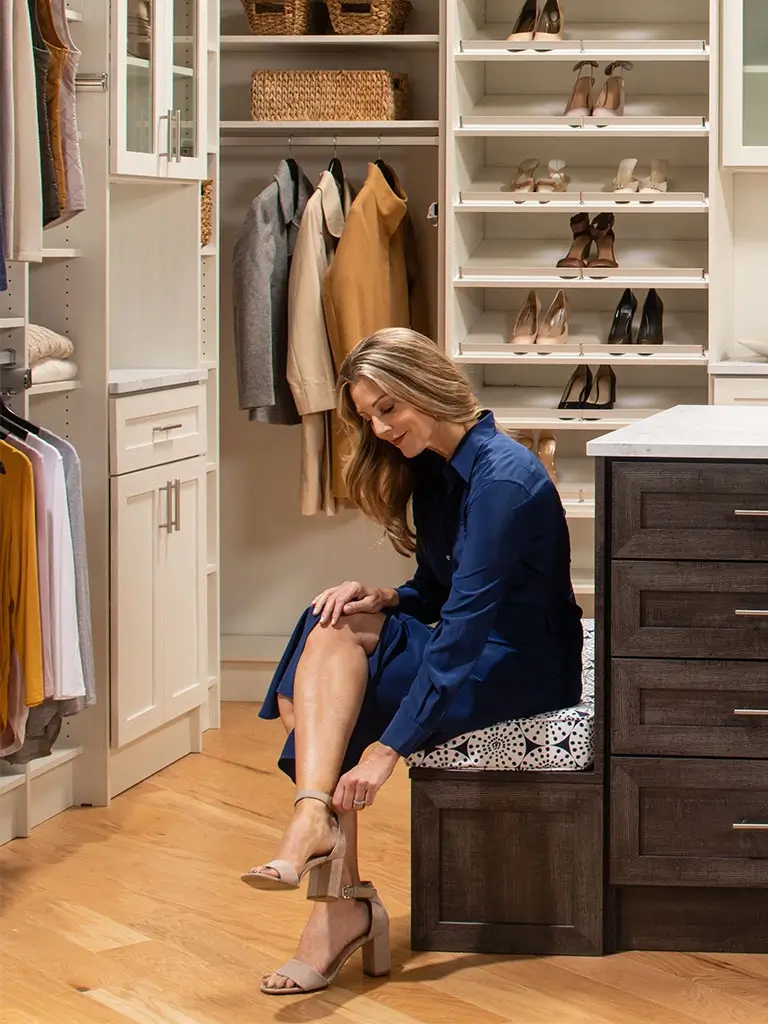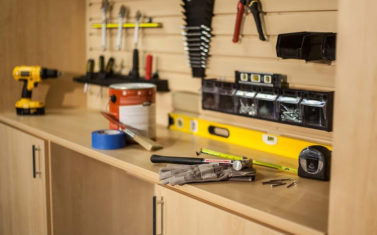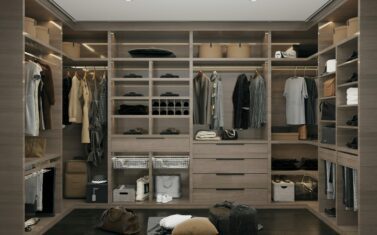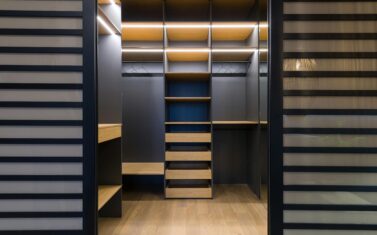
Solve Your 4×4 Closet Woes With Custom Design
5 minute read, by Closet America, on May 15, 2018
Focus your imagination on the potential of the small and square—the 4×4 closet. Take the approach: “there’s so much more to a 4×4.”
You open the door, and at first glance, it seems so woefully small. Honestly, you say, there’s only so much space in that 4×4 closet. A few weeks ago in our Walk-In Closet Dimensions post, we surveyed various types of walk-in closets and offered several recommendations to improve the organization for each. Today, we focus your imagination on the potential of the small and square—the 4×4 closet. We take the approach: “there’s so much more to a 4×4.”
Do the Numbers: There’s More Space Than You Think
In a 4×4 closet with an eight-foot ceiling, you have approximately 128 cubic feet of potential. Not that you would, but a closet of that size could accommodate almost 400 boxes of shoes. Many of the newer homes with 10-foot ceilings in the Fairfax area have the luxury of 160 cubic feet of potential.
Yes, a 4×4 is a small walk-in closet, but when you stand in the middle, you only occupy a fraction of the space, 2.7 cubic feet on average. There’s ample space for wardrobe and accessories. And all of your items are within arm’s reach. Your closet can accommodate more clothing and accessories than you think. It’s simply a matter of optimizing that space. Let’s begin by imagining the closet arrangement in light of your current wardrobe.
Arrange Your Closet to Match Your Wardrobe
Our overall guidance: your closet arrangement should match your wardrobe. To be specific, your closet should be designed for your wardrobe. Hanging space for suits, dresses, slacks, blouses, and skirts, and shelves for knits, denim, sweaters, and accessories should be proportional to those items in your wardrobe. Which items constitute the majority of your wardrobe? Which are next in quantity? What about footwear?
Continue through your collection until you’ve sorted and quantified everything. At the end of this exercise, you’ll have a good sense of how much space to devote to hanging and how much to devote to shelving. And as you’re doing this inventory, we always recommend you give some thought to purging your wardrobe of outdated or unused items. Don’t clutter your closet with items you no longer need.
Allocate Hanging Space
With an average depth of 26 inches from the wall to garment edge, the best location for hanging rods is the back wall. You can maximize that area with double hanging rods placed at 40-inch and 80-inch heights. Above that, you’ll have approximately 16 inches of vertical storage, or 40 inches in a closet with a 10-foot ceiling. A full 48-inch shelf above the hanging rods will best utilize the space. That shelf is ideal for a backpack, handbags, and large, infrequently used items.
In the event that your closet door is offset, you may also be able to add hanging rods, single or double, depending on type and number of items, on one side of the closet to gain additional storage. The “L” arrangement works well, especially if your wardrobe is primarily suits, dresses, skirts, slacks, and blouses.
Allocate Shelving Space
More likely, your closet door is centered, and in that case, the side walls are best used for shelving. With a minimum of 12-inch deep shelves on opposite walls and 22 inches already occupied by garments hanging on the back wall, you’ll have approximately 3.6 square feet of floor space to maneuver. Sure, you won’t be able to dance, but it’s not woefully tight, everything in your closet will be within arm’s reach.
Fortunately, with almost 30 square feet of wall space for shelving, you have flexibility in arranging shelving to accommodate shoes, sweaters, sportswear, and accessories. In comparison to clothing on hangers, by folding and placing on shelves you really optimize storage space.
Don’t Forget the Back of the Door
Often overlooked, but with the limited area of a 4×4 closet, every space counts. Consider these high-quality custom accessories to help you accommodate smaller, but numerous wardrobe items. Don’t let the back of the closet door be underutilized.
A tie rack is an obvious choice. It’s easily mounted and takes up little space. So much more preferable than draping ties en-masse over a rod or hanger. But it’s not just for ties. If you have a collection of scarves, a tie rack is preferable to scrunching scarves in a drawer and makes them so much more accessible. Unless you have a huge selection, ties won’t occupy the entire closet door, so there’s room for a belt rack too. That’s another example of the optimal use of small closet space.
Realize the True Potential of That 4×4 Closet
We’re hopeful that with these ideas you now envision your humble 4×4 closet with new potential. Remember that each of these suggestions is only a starting point. You have unique wardrobe and lifestyle needs.
To truly solve the challenge of maximizing storage in your 4×4 closet, we recommend you seek the experience and guidance of a custom design expert. Schedule a free in-home consultation that carefully considers your wardrobe, lifestyle, and existing closet space. A designer will quickly create a 3D interactive model with an optimized layout for your closet. The components of your custom-designed closet are built by hand at our Landover, MD facility, using the finest components. You’ll be amazed at the additional storage space you gain from your 4×4 closet!
Lead image by Pexels user Pixabay
Image 2 by Flickr user keepingtinme_ca

